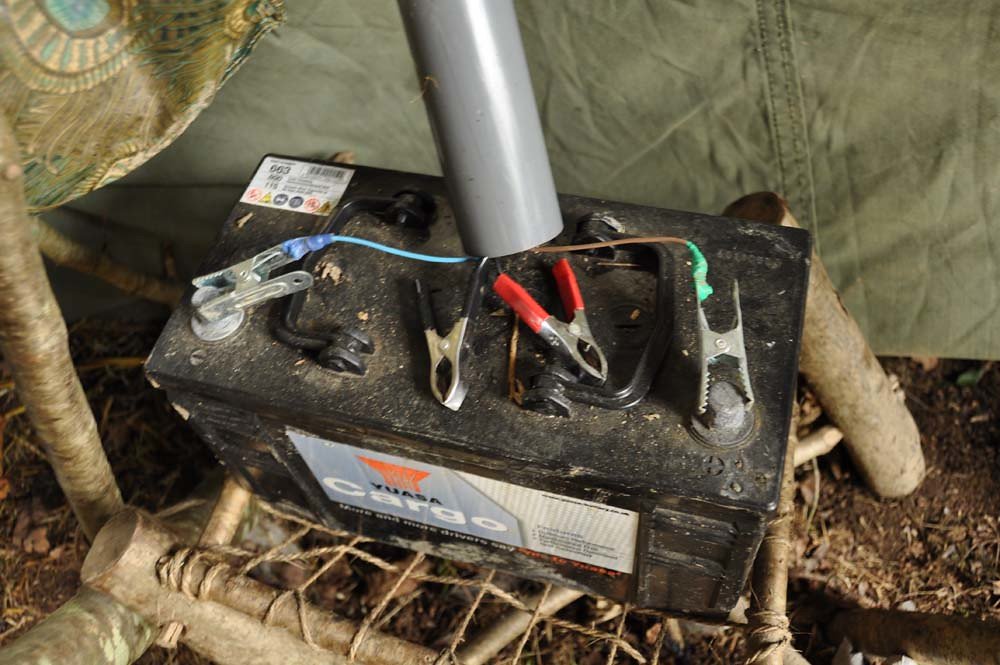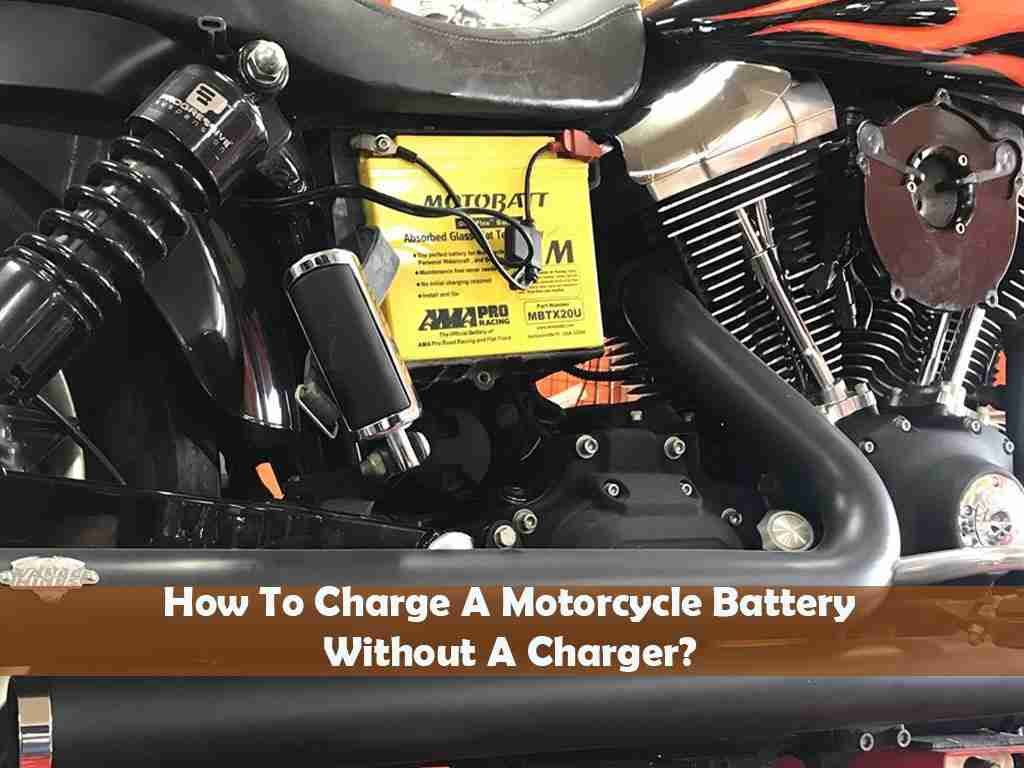Motorcycles are a convenient way to get around, but they can be tricky to keep running. One common problem is that the battery dies and needs to be recharged. But what if you don’t have a charger? This can be frustrating if you don’t have a motorcycle battery charger on hand. Fear not, because there are several ways to charge a motorcycle battery without one.
Most people don’t know how to charge the battery of a motorcycle without a charger. Not knowing how to charge your motorcycle battery can leave you stranded on the side of the road.
Several people think that you need to have a special motorcycle battery charger for charging the battery of your motorbike but that’s not always the case.
In this article, we will outline some of the most popular methods for the question “How To Charge A Motorcycle Battery Without A Charger?”
Charging a Motorcycle Battery with Jump Starter – Step by Step Guide
- First, before starting, make sure the jump starter is fully charged and turned off.
2. Locate your motorcycle battery. It is mostly located under the seat of your bike.
3. Check the positive and negative terminals on the battery. The positive terminal will be marked with a + symbol, and the negative terminal will be marked with a – symbol.
4. Connect the positive clamp of the jump starter to the positive side.
5. The negative clamp will be attached to the negative terminal of your battery.
6. Now turn on the jump starter and allow it to charge your bike’s battery.
7. Once the battery has charged, removed both positive and negative clamps from the terminals. now start your bike and let it run for a few minutes to ensure the battery is charging.
5. Once you have confirmed that the battery is fully charged, turn off your bike and disconnect the jump starter from the battery.
Charging a motorcycle battery using jumper cables:
If you need to charge your motorcycle battery with jumper cables, Make sure that the battery is charged. Jumper cables will not work if the battery is dead.
1. Find a vehicle with a battery that is working next. Park the two vehicles close together so that the jumper cables can reach both batteries.
2. Turn off both ignitions once the vehicles are positioned.
3. Now, you will be required to connect the jumper cables. First, connect the positive cable to the positive terminal of the dead battery. Once the positive cable is connected to the working battery, connect its other end to the positive terminal.
4. Now connect the negative (black) cable to the negative terminal of the working battery. On the vehicle with the dead battery, connect the cable to a metal ground.
This allows the charge to flow making the circuit complete from the working battery to the dead battery.
5. Once the battery is working, start the vehicle and let it run for about 30 minutes to an hour. This will give the motorcycle battery enough time to charge.
The charge will flow from the working battery to the dead battery this way. Once the dead battery is charged, you can turn off both vehicles and disconnect the jumper cables.
Charging a motorcycle battery with a car’s cigarette lighter outlet:
The cigarette lighter socket of a car can also be used to charge a motorbike battery.
1. When charging your motorcycle battery with a car’s cigarette lighter outlet, firstly be sure that the battery is charged. The cigarette lighter outlet will not work if the battery is dead.
2. Next, find a car with a working cigarette lighter outlet. The charging cord should be able to reach both batteries if the two vehicles are parked close together.
3. Once the vehicles are in position, turn off both ignitions.
4. Now, you will require to connect the charging cord. First, connect the positive (red) cable to the positive terminal of the dead battery. Once the positive cable has been connected to the car cigarette lighter outlet, connect it to the other end of the cable.
5. Connect the negative cable to the negative terminal of the battery. Then, connect the other cable to a metal ground on the vehicle with the dead battery.
Complete the circuit and let the charge flow from the car’s battery to the motorcycle’s battery.
6. Start your car and let it run for a few minutes. This will allow the motorcycle’s battery to receive a charge from the car’s battery. You can disconnect the charging cord once the battery is charged.
Charging a motorcycle battery with an AC adapter:

Below is the step-by-step guide to charging your motorcycle battery using an Ac adapter.
1) Before using an AC adapter to charge your motorcycle battery, make sure that the battery is fully charged. The AC adapter will not work if the battery is dead.
2) Next, find an AC outlet. Park the motorcycle close to the outlet so that the charging cord can reach both the outlet and the battery.
3) Once the motorcycle is in position, turn off the ignition.
4) Now, you will need to connect the charging cord. First, connect the positive (red) cable to the positive terminal of the battery. Then, connect the other end of the positive (red) cable to the AC outlet.
5) Attach the negative cable (black) to the negative terminal of the battery. Then, connect the other end of the negative (black) cable to a metal ground on the motorcycle. This will complete the circuit and allow the charge to flow from the AC outlet to the battery.
6) After turning on the AC adapter, let it run for a few minutes. In this way, the AC outlet will be able to charge the battery. When the battery is fully charged, you can turn off the adapter and disconnect the charging cord.
Related: Why Is My Motorcycle Battery Not Charging?
How to Charge a Motorcycle Battery with Phone Charger?
Tips for keeping your motorcycle’s battery charged:
Some of the tips to keep your motorcycle battery fully charged are as follows:
1. If you have a manual motorcycle, make sure to charge the battery regularly by starting the engine and letting it run for a few minutes.
2. Take your automatic motorcycle out for a ride regularly to recharge the battery.
3. If you know you won’t be using your motorcycle for a while, disconnect the battery and store it in a cool, dry place.
4. Avoid short trips where the engine doesn’t have a chance to fully warm up.
5. Take your motorcycle for long rides regularly.
6. Check the battery terminals regularly for corrosion and clean them if necessary.
7. Check the electrolyte level in the battery and add distilled water if necessary.
8. Avoid letting the battery discharge completely.
9. Once a month, disconnect the negative (-) terminal from the battery and clean the terminals and cable ends with a wire brush. Reconnect the negative (-) terminal to the battery.
10. Invest in a quality battery charger and use it to charge your battery regularly.
11. If you won’t be using your motorcycle for an extended period, disconnect the negative (-) terminal from the battery to prevent it from discharging.
12. Bring your motorcycle to a professional mechanic every few years for a tune-up and battery check.
FAQs
Conclusion
So, if you find yourself in a situation where you need to recharge your motorcycle battery and don’t have access to a charger, all is not lost. You can still get the job done as long as you have some basic tools and know how to use them.
We hope that this article has shown you how to do just that so you should be able to get your bike up and running in no time.
